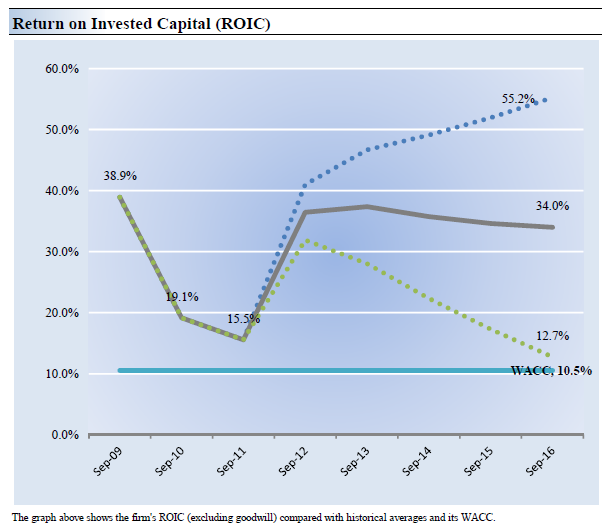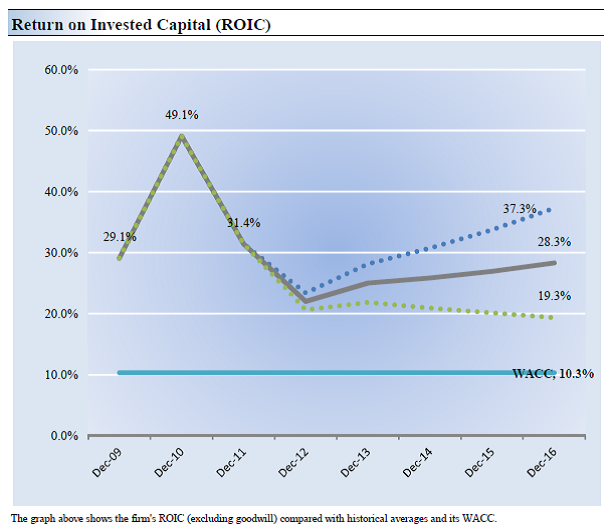Fairly analyzing fairvalue pricing
Post on: 2 Май, 2015 No Comment

Remember what Obi-Wan Kenobi told a group of stormtroopers as they inquired about Luke Skywalkers droids? These arent the droids youre looking for. Obi-Wan may have used a Jedi mind trick to fool those stormtroopers, but when it comes to investors who analyze net asset value (NAV) performance to measure the tracking error exhibited by Vanguard international ETFs, I would suggest (no fooling) that those arent the returns youre looking for.
I understand the concern. The existence of what is perceived as high tracking error would seem at odds with funds that are run at cost and managed with a large percentage of index replication. While costs and optimization can cause a funds return to deviate from that of its benchmark index, the practice of fair-value pricing can be an influential driver of deviation for certain Vanguard ETFs®.
Some fund NAVs—and stock index values—are calculated using the closing prices of underlying securities in their local markets. However, many local markets close before the U.S. markets, so by the time an international stock fund in the United States strikes its 4 p.m. Eastern time, NAV, the local prices of international stocks are stale.
Price-affecting information continues to enter the marketplace, but such information does not have an effect on those stocks because the markets on which they trade are closed. Fair-value pricing estimates what international stocks would be worth if their local markets were still open for trading alongside U.S. markets.
Lets use a hypothetical example to illustrate.
Suppose ABC Inc. an Asian computer manufacturer, ended its trading at 1 a.m. Eastern time, at $50. Thats the price that indexes use. When funds also use that same price, there is no resulting tracking error.
Now suppose that during the U.S. trading day, the shares of personal computer makers are trading flat until news hits that global demand for PCs is going to severely fall, and, as a result, the shares of several well-known PC makers in the United States suddenly drop 5%.
If Asian markets were open, its reasonable to assume that the price for ABC stock would also drop. Vanguards process for fair-value pricing uses unbiased input such as statistical models and other market data that, in this hypothetical case, would likely price ABC in its international portfolios closer to $47.50 than $50.
Vanguard does this because we provide our mutual fund investors with the opportunity to buy and sell shares at a 4 p.m. NAV. The fair-value pricing discourages market-timing in our mutual funds, which benefits our long-term shareholders as the actions of market-timers can drive up costs for other shareholders.
So why does this affect Vanguard ETFs?
Since Vanguard ETFs are a share class alongside mutual fund share classes of the same fund portfolio, their NAVs are computed via the same process. ETFs obviously provide investors with intraday market price (not NAV) liquidity because they trade on an exchange. In addition, our fair-value pricing policy freely allows authorized participants to call in same day creations and redemptions.
When attempting to gauge the performance of a Vanguard international stock ETF versus its benchmark, there are two ways to reconcile the fair-value pricing. The first looks at the funds NAV returns minus the fair value component, while the second looks at market-price returns. Each can be seen on a products performance page on our website.
Take a look at the performance table below for Vanguard Total International Stock ETF (VXUS ). For the one-year period ended December 31, 2012, VXUS (18.22% return) outperformed its benchmark (17.04% return) on an NAV basis by 118 basis points.
On the surface, this seems like a rather staggering amount. However, if you look at the bottom row, you can see that 110 basis points of the outperformance was due to the fair-value pricing adjustment. This means that on a pre–fair-value basis, VXUS returned 17.12%, which lowers its relative return to just 8 basis points. It is extremely important to note that fair-value adjustments can move in the other direction and that pre–fair-value excess returns can be negative. Either way, the difference due to fair-value pricing tends to smooth out over time.
www.vanguard.com/performance. The performance of an index is not an exact representation of any particular investment, as you cannot invest directly in an index.

Analyzing market-price returns can provide insight into a kind of fair-value pricing that is imposed by market participants on the ETF itself (as opposed to the underlying securities). Again, since international stock markets are closed at the end of the U.S. trading day, market participants make bid and ask prices on international ETFs based upon those participants estimates of where the underlying securities would be trading if their markets were still open. It is not uncommon to see large “tracking error” for international ETFs on a market-price basis. In fact, when analyzing two ETFs that seek to track the same benchmark or substantially similar ones, checking market-price performance should be an important part of the due-diligence process.
The ability of an index fund to track its underlying index can summarily be judged by how much its returns deviate from that of the index. However, by simply judging NAV returns without understanding the potential effect of fair-value pricing, I would suggest that those arent the returns youre looking for.
Net asset value (NAV): The market value of a mutual funds total assets, minus liabilities, divided by the number of shares outstanding. The value of a single share is called its share value or share price.
Optimization: When an index fund or ETF uses sampling techniques instead of full replication in seeking to track the performance of an index. Optimization is often used when full replication is not practical, but it can lead to greater tracking error.
Creation and redemption: The process by which Authorized Participants (typically large financial institutions) conduct an in-kind transfer of securities into or out of the fund. This allows imbalances between supply and demand for ETF shares to be satisfied without having an adverse taxable effect upon existing ETF shareholders.
All investing is subject to risk, including possible loss of principal. Investments in stocks issued by non-U.S. companies are subject to risks including country/regional risk and currency risk. These risks are especially high in emerging markets.
Vanguard ETF Shares are not redeemable with the issuing Fund other than in Creation Unit aggregations. Instead, investors must buy or sell Vanguard ETF Shares in the secondary market with the assistance of a stockbroker. In doing so, the investor may incur brokerage commissions and may pay more than net asset value when buying and receive less than net asset value when selling.
Vanguard provides its services to the Vanguard funds and ETFs at cost.














